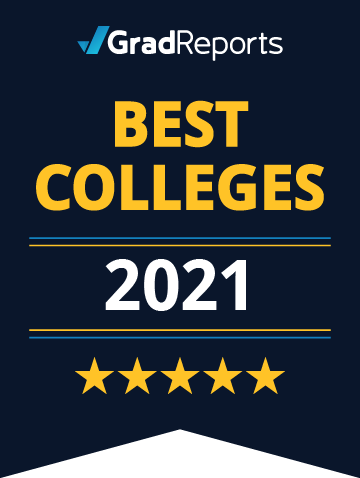2021 Best Colleges in the U.S. by Salary Score™
When making decisions about higher education, one of the top considerations for students is how their degree will impact their career and salary. Higher education is a significant financial investment, and we believe salary is a critical metric of student success. This list highlights schools whose alumni earn high salaries in the year after graduation, regardless of their field of study. The schools on this list are ranked by our proprietary Salary Score, which reflects how much alumni make compared to alumni of the same programs at other colleges. To be considered for our rankings, schools must offer and provide data for at least 10 bachelor's programs. Read our methodology to learn more about how schools were ranked.
Our research found that 86 of the top 100 schools for earning potential were private colleges, and the top 19 schools were private nonprofit institutions. We also found that only six out of the eight Ivy League schools were listed in the top 25 schools for earning potential. This finding highlights the fact that, while prestigious universities do often produce highly paid graduates, there are many non-elite institutions whose graduates earn comparable salaries across a range of industries.
Tuition, median salaries, and median debt were reported by the U.S. Department of Education in November 2019. View our methodology for more details about these rankings or read more about the top-ranked schools.
KEY INSIGHTS:
- Colleges with the highest Salary Score for bachelor's degrees are overwhelmingly private universities, accounting for 86 of the top 100 schools
- Minnesota graduates fared especially well at the bachelor’s level when the cost of living was factored in – Minnesota had the fifth-highest median Salary Score at the state level but falls just above the national average for living expenses
- Thomas Edison State University, an online institution that primarily serves adult learners, held the #1 spot for public schools based on alumni salaries, ahead of University of California-Berkeley
How do the 2021 GradReports rankings compare to this year’s U.S. News rankings?
U.S. News has been publishing college rankings lists since 1983 and is a well-known resource for students and schools alike. Its ranking lists evaluate schools based on various metrics often reported by the schools themselves, such as selectivity, graduation and retention rates, student-to-faculty ratio, and academic reputation. Critics have long cited issues with the U.S. News methodology, saying that it ranks based on prestige and focuses on affluent students and schools rather than data-driven student outcomes.
Several schools are featured on our rankings list of schools with the best Salary Score that do not rank highly on U.S. News’ National College Rankings. Most notably, Santa Clara University ranked at #7 on our rankings list with a Salary Score of 98.23 but ranked at #53 in the U.S. News rankings list this year. Elon University, which we ranked at #16 with a Salary Score of 94.87, ranked #88 on the U.S. News list.
Thomas Edison State University, a primarily online institution focusing on adult learners, did not appear on any U.S. News rankings. We ranked Thomas Edison State at #20 for bachelor’s salaries, with a Salary Score of 94.2.
Several colleges on our rankings list are not considered “National Universities” by U.S. News and did not appear on the ranking, but did appear on the National Liberal Arts Colleges rankings list.
Amherst College held the #2 spot on the U.S. News rankings list for national liberal arts colleges but came in at #14 on our overall list based on a Salary Score of 95.9. We ranked Barnard College at #12 for alumni salaries with a Salary Score of 96.41, while U.S. News ranked the college at #22. Trinity College came in at #17 on our list with a Salary Score of 94.71, but it was ranked #44 in the U.S. News liberal arts colleges list.
Read more in our article: Pay over Prestige: College Rankings that Focus on What Actually Matters to Graduates
What are the top five states for a bachelor's degree?
Most of the states with the highest alumni salaries also had a high cost of living. Graduates of schools in the District of Columbia had the highest salaries one year after graduation, with an overall median Salary Score of 83.88. The District of Columbia is the second-most-expensive area to live in the country, likely resulting in higher salaries for graduates who remain in the area.
Massachusetts graduates came in second with a median Salary Score of 72.21 for those who earned bachelor’s degrees and a cost of living that’s just behind New York. Alumni who attended schools in Rhode Island came in third with a median Salary Score of 67.88. Rhode Island was the 10th-most-expensive U.S. state in 2020. New Hampshire is the 15th-most-expensive state in the country and schools in the area had a median Salary Score of 67.41, which makes the state fourth on the list for bachelor’s degree salaries.
Minnesota graduates fared especially well compared to graduates in states with a higher cost of living. Minnesota has an average cost of living but ranked fifth for alumni salaries at the bachelor’s level, meaning alumni salaries are not strongly correlated to living expenses in the state.
Top Five States for Bachelor’s Degree Salaries
| State | Cost of Living Index* | Median Salary Score™ |
|---|---|---|
| Washington D.C. | 161.1 | 83.88 |
| Massachusetts | 132.6 | 72.21 |
| Rhode Island | 119.4 | 67.88 |
| New Hampshire | 108.2 | 67.41 |
| Minnesota | 101.2 | 67.06 |
Cost of Living by State Source: Missouri Economic Research and Information Center
A low Salary Score was common for schools in Southern states with a lower cost of living, which may explain why graduates in these areas made less in their first year of employment than alumni in other states.
What are the best public colleges based on bachelor’s degree Salary Score™?
Alumni from private schools tended to earn higher salaries than those at public schools at the bachelor’s degree level. However, 14 of the top 100 schools for earning potential were public colleges and universities. Three out of the top five public schools were located in California, which has a high cost of living and may contribute to higher graduate salaries.
Top Five Public Colleges at the Bachelor’s Degree Level
| Public College Rank | Overall Rank | School Name | Salary Score™ |
|---|---|---|---|
| 1 | 20 | 94.20 | |
| 2 | 22 | 93.80 | |
| 3 | 38 | 90.16 | |
| 4 | 44 | 89.07 | |
| 5 | 50 | 88.36 |
Thomas Edison State University (TESU) earned the top spot for public institutions based on alumni salaries, ahead of the highly regarded University of California-Berkeley. TESU is a primarily online university with programs designed for working adults. The university had a Salary Score of 94.2, which indicates that the school produces highly paid graduates across a range of industries. The school serves students in all 50 states and offers online programs in a range of fields. The fact that its student population is spread across the country may show strong academic quality, as a higher cost of living in one area is unlikely to be impacting alumni salaries. Online education has become increasingly popular over the last decade as adult learners continue to turn to flexible and more affordable degree options. This finding highlights the strong potential for online learning to become more mainstream, as it can have a clear impact on graduates’ salaries.
The University of California-Berkeley ranked second for public universities based on alumni salaries, with a median Salary Score of 93.8. The Berkeley location is the original campus of the University of California school system and serves more than 30,000 students at the undergraduate level.
California Polytechnic State University-San Luis Obispo ranked third with a Salary Score of 90.16. The school serves nearly 22,000 students through more than 60 degree programs. Cal Poly emphasizes hands-on experience through undergraduate classes and research, and 93% of its students are either employed or in graduate school within nine months of earning their bachelor’s degree, according to its website. The focus on real-world experience in the curriculum may contribute to having better-prepared graduates who earn higher salaries.
The College of New Jersey ranked fourth for public schools, with a Salary Score of 89.07. Located in Ewing Township, New Jersey, the college offers liberal arts and professional programs in arts and communication, business, education, engineering, humanities and social sciences, nursing and health, and science. The college has 7,800 enrolled students, most of whom are undergraduates.
Finally, California State University (CSU)-East Bay ranked fifth for public schools, with a Salary Score of 88.36. The university is known for its diverse student body, which includes many first-generation college students. CSU-East Bay serves more than 14,000 students through its two campuses located in Hayward and Concord and its online programs.
How do our salary score™ stack up in terms of public, private, and for-profit schools?
Overall, private nonprofit institutions fared best in terms of undergraduate alumni earnings, with a median Salary Score of 55.41. Private for-profit institutions ranked second with a median Salary Score of 52.31. This finding may be surprising, as for-profit institutions are often associated with poor student outcomes. However, this is likely skewed because only 12 for-profit institutions had 10 or more unique programs, a requirement to be included in our ranking list. Only two of these schools had high enough alumni earnings to make our top 100 list: Capella University had a Salary Score of 90.97 and the American Public University System had a Salary Score of 89.54.
Public nonprofit institutions as a whole had the lowest median alumni earnings, with a median Salary Score of 48.29.
| Profit Status | Public/Private | Salary Score™ |
|---|---|---|
| Nonprofit | Private | 55.41 |
| For-Profit | Private | 52.31 |
| Nonprofit | Public | 48.29 |
Best Bachelor's Degrees by Major
Best by State
Find the best colleges in your state based on Salary Score™.

Optimal Choice Colleges
Our list of Optimal Choice colleges highlights schools that offer high alumni salaries and low tuition, meaning they have a Salary Score above the 60th percentile and below-average tuition. We researched the salary and tuition information of over 1,700 schools to find the colleges that have strong returns without the high price tag.
2021 Best Colleges Highlights

Harvard University is a large private institution founded in 1636 as Harvard College, which is still the name for the school’s undergraduate division. Harvard is located in Cambridge, Massachusetts, across the Charles River from Boston. About 6,600 undergraduates work toward a Bachelor of Arts or Bachelor of Science in one of 50 concentrations in engineering, science, the arts and humanities, and social science. Students can also design their own interdisciplinary study path, subject to approval. Roughly half of Harvard undergraduates are on an honors track. Harvard’s median class size is 12, and its graduation rate is 98%.
According to College Navigator, 73% of full-time first-year undergraduates receive financial aid, including 57% who receive a scholarship from the college. Harvard awards scholarships solely based on need, not merit, and students from families who earn less than $65,000 a year pay no tuition. Harvard provides a Net Price Calculator so students can estimate their total yearly cost of attendance. The college encourages students to visit the Office of Career Services in their first year to take full advantage of advisors, career fairs, and speakers from Harvard’s alumni network.
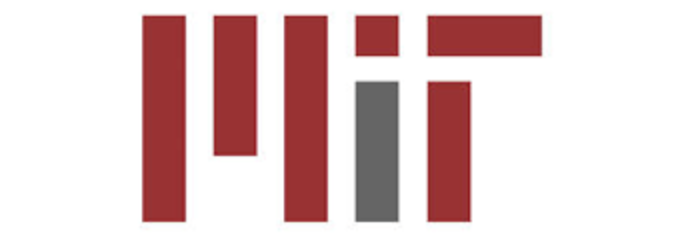
The Massachusetts Institute of Technology (MIT) is a medium-sized, private university founded in 1861. About 4,500 undergraduates study at MIT’s campus in Cambridge, Massachusetts, at a 3:1 student-to-faculty ratio. MIT offers a mix of Bachelor of Arts and Bachelor of Science degrees in 54 majors across six divisions, including the School of Architecture + Planning and the Schwarzman College of Computing.
About 85% of undergraduate students engage in MIT’s Undergraduate Research Opportunities Program (UROP), where they help faculty develop and implement research projects. Some of these opportunities come with academic credit or a paid stipend. Almost 90% of students receive some form of financial aid and 78% graduate with no student loan debt. MIT awards scholarships based on need instead of merit through a need-blind process, ensuring that no applicant is disadvantaged just because they need more assistance. In 2019, the Office of Career Advising & Professional Development and the MIT Alumni Association helped 55% of alumni find a job after graduation and 36% enroll in a postgraduate degree program.
Visit the Massachusetts Institute of Technology’s website >>

Yale University is a medium-sized, private institution founded in 1701. The school is located in New Haven, Connecticut, on the coast of Long Island Sound. Approximately 6,000 undergraduate students choose from 81 majors—some of which offer both a Bachelor of Science and Bachelor of Arts track—and 95% of them graduate within five years. Yale reports a student-to-faculty ratio of 6:1.
Yale offers the opportunity to apply for research positions, including 100 spots for first-year students each year. About 95% of undergraduates conduct faculty-led research at one of the 800 science, math, or engineering labs at Yale. In addition, all students can visit Yale’s libraries, art galleries, and on-campus museums with a student ID. Yale allocates its institutional financial aid by need, with 53% of undergraduates receiving an average amount of about $53,000 each. Prospective students can use two different tools to estimate their yearly cost for a Yale education. For students nearing graduation, the Office of Career Strategy provides self-assessments and guided counseling to help students develop plans for the future.
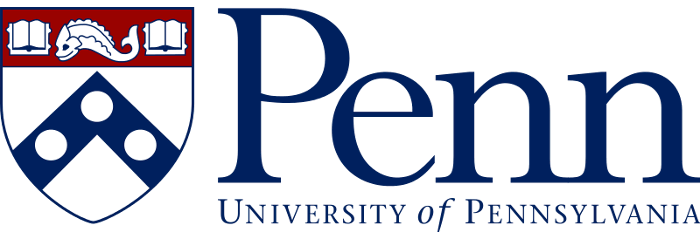
The University of Pennsylvania is a large private university founded in 1740. Penn sits in the heart of Philadelphia, and its 10,400 undergraduates choose from nearly 100 majors to study. The student-faculty ratio is 6:1, and 96% of bachelor’s students graduate by their six-year mark.
As a research university, Penn offers opportunities for undergraduates to join a faculty member’s project or secure funding for one of their own. Students can also pursue programs unique to Penn: Benjamin Franklin Scholars forge interdisciplinary links across schools at the university, and University Scholars undertake advanced research and graduate-level study in their disciplines. The university has sought to expand need-based financial aid resources for undergraduates, especially low-income and first-generation college students. Penn's policy is to administer only grants and work-study awards, rather than loans that will leave students in debt. Currently, 46% of bachelor’s students receive grants from Penn, at an average of $54,000 a year.
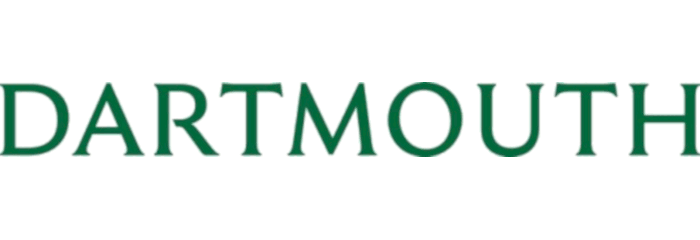
Located in Hanover, a small town in western New Hampshire, Dartmouth College is a medium-sized private institution founded in 1769. The school’s 4,400 undergraduates choose from 54 Bachelor of Arts degrees and one Bachelor of Engineering degree, or they may craft their own interdisciplinary program. Academic terms run on Dartmouth’s unique D-Plan: students choose which 10-week terms to attend from the four offered each year. There are some restrictions, but the design gives students the flexibility to map their own course of study.
Bachelor’s students at Dartmouth can collaborate with faculty on research and participate in special programs, such as the Women in Science Project or Senior Fellowship Program. Dartmouth’s Center for Career Development also helps students obtain internships and access the school’s alumni network. Just under half of Dartmouth undergraduates receive financial aid from the school based on need, and students with family incomes under $100,000 receive free tuition. The average aid package is more than $60,000 a year.
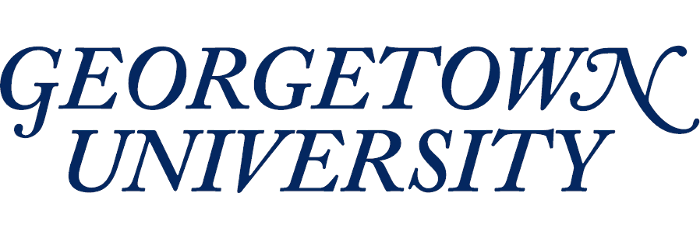
Georgetown University is a large, private, Catholic and Jesuit institution in Washington, D.C., located just a short distance from all three branches of the U.S. government. Founded in 1789, it’s the oldest Catholic university in the country. Georgetown’s 7,200 undergraduates study for a Bachelor of Arts or Bachelor of Science in one of 44 majors and 56 minors. The student-to-faculty ratio is 11:1.
Georgetown is a research-focused institution, and bachelor’s students can pursue independent research or team up with faculty for ongoing projects. Eligible students may fund their research or experiential learning projects through fellowships, such as the Royden B. Davis Fellowship. The Cawley Career Education Center can help students capitalize on their research experience during a job search or application for a higher degree. To help fund a bachelor’s degree, Georgetown awards scholarships based on need, with a student’s family always responsible for at least a portion of tuition per year.
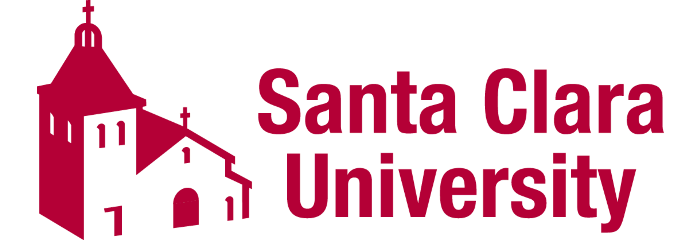
Santa Clara University (SCU) is a private, medium-sized Catholic and Jesuit university founded in 1861. SCU is located in Santa Clara, surrounded by well-known technology companies in California’s Silicon Valley. Over 5,500 undergraduate students pursue Bachelor of Arts, Bachelor of Science, or Bachelor of Science in Commerce degrees in one of nearly 60 majors. Courses run on three 11-week quarters, plus two compressed summer sessions. SCU reports an average class size of 21 and a student-faculty ratio of 10:1.
Undergraduates can pursue a variety of funding streams for original research, including fellowships and grants, or they can join a faculty-led project. The Frugal Innovation Hub is a special program allowing engineering students to develop humanitarian projects to help people in need. SCU provides academic resources such as tutoring, writing help, advising, and 24/7 library resources, and the Career Center offers job and internship assistance (including connections with local tech giants). Students are eligible for merit- and need-based scholarships for help with funding their degrees.

Carnegie Mellon University (CMU) is a medium-sized private university located next to a 500-acre park in Pittsburgh, Pennsylvania. Founded as a technical institute in 1900, the school’s 7,000 undergraduates today study for a bachelor’s degree in one of 80 majors or 12 interdisciplinary programs. CMU reports a student-faculty ratio of 13:1.
The technical knowledge base of CMU students and faculty has led tech companies to open operations centers in Pittsburgh. Undergraduates can pursue research opportunities in everything from robotics to creative writing, and can seek funding through research grants and summer fellowships. CMU hosts an annual undergraduate research conference called Meeting of the Minds, at which students present their work and compete for awards. The university offers financial assistance to students based on family need, including higher-earning families with more than one student in college. Students can also pursue scholarships, such as the Presidential or Carnegie Scholarships for first-year students. The Career and Professional Development Center supports students with career exploration tools, resume and interview preparation, and job fairs and networking events.
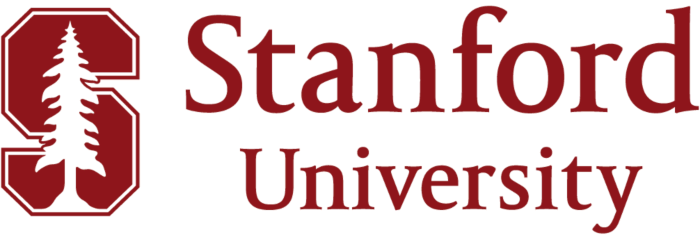
Founded in 1885, Stanford University is a large, private institution in Palo Alto, California. The school is situated between San Francisco and the technology hotspot of Silicon Valley. Stanford’s 7,000 undergraduates pursue a Bachelor of Arts, Bachelor of Sciences, or Bachelor of Arts and Sciences in one of 65 majors across three schools: Humanities and Sciences, Engineering, and Earth, Energy & Environmental Sciences. The student-faculty ratio is about 5:1, and 70% of undergraduate classes contain fewer than 20 students.
Stanford’s $1.6 billion annual research budget means that undergraduates can pursue research agendas using university funding. One funding stream is Student Grants, in which students develop a project and conduct the work under faculty supervision. Undergraduates can also join an ongoing project run by an academic department or specialized research center. Stanford’s commitment to need-based financial aid allowed 83% of a recent class to graduate with no student debt. Students whose families earn less than $150,000 annually pay no tuition.

Dominican University of California is a small, private Catholic and Dominican institution established in 1890. The campus sits 12 miles north of San Francisco in a residential neighborhood of San Rafael, California. The school’s 1,400 undergraduates study across 60 majors and 68% of them come from ethnically diverse backgrounds. Dominican reports an average class size of 16 and a student-to-faculty ratio of 9:1.
All undergraduates engage in the Dominican Experience, a four-part approach to preparing students for their careers after graduation. Students meet regularly with a mentor who’s also a career coach, finish an original work project before graduating, engage in some form of community work or service, and create a digital portfolio to help market themselves to employers. In 2020, the university adapted the program into the Dominican Experience Flex, which allows for online and hybrid delivery for some components of the Dominican Experience. A large percentage of the school’s students receive scholarships or grants to help fund their degrees, including special scholarships for students of color and grants for transfer students from Bay-area community colleges. Dominican also offers student services for everything from academic advising and student health to career development.
